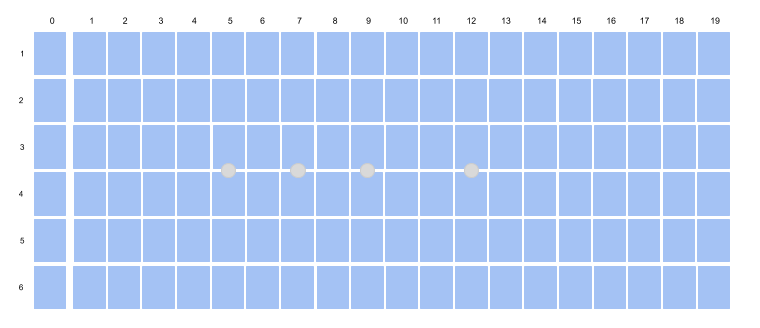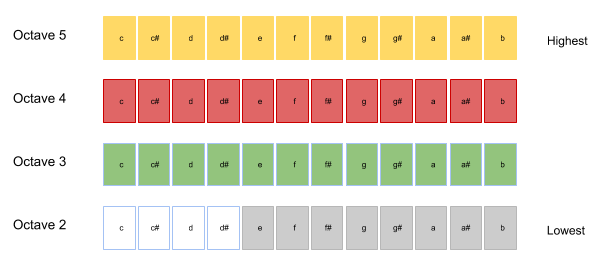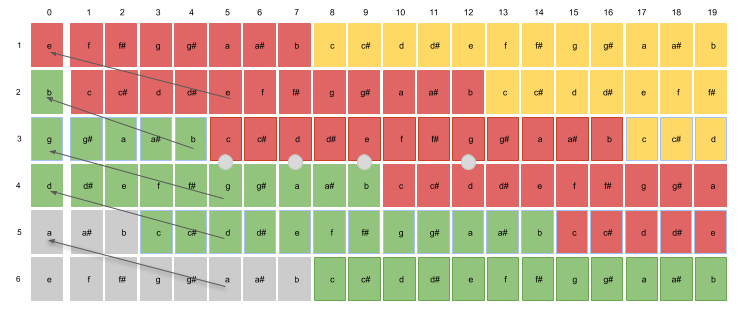The General Layout
Below is the general fingerboard layout of a standard classical guitar. It has 6 strings and 19 fret positions. Many guitars have round dots placed across the fingerboard. They allow you to find specific positions quickly when you are playing.

The Abstracted Fingerboard
For instructional purposes we use a simplified version of the fingerboard shown below. The left-most column signifies open strings. Otherwise it completeley represents the real guitar fingerboard shown above with six strings and 19 positions.

Half-Tones
Half-tones are the basic building blocks of music. Sounding half-tones in various sequences and rhythms creates music.

Octaves
The 120 half-tones in our hearing spectrum are packaged together in groups called Octaves. Every Octave contains 12 half-tones. Each half-tone has a unique name with c being the lowest and b being the highest. Some half-tones have a symbol called a sharp (#). More about that later.

Octaves can be chained together with the higher octaves being twice as high in pitch as the lower one.

The complete Tonal Range
So how many octaves are there? Well, the entire musical spectrum that we can hear covers 10 octaves from the lowest octave 0 to the highest octave 9. Pianos have the wides tonal range of any instrument covering over 7 octaves. Guitars can cover from 3 1/2 to 4 1/2 octaves depending on the style of the guitar.

The Guitar Octaves
The standard classical guitar covers about 3.7 octaves starting on the second octave and ending at the fifth.

Dividing the Octave Range to Strings
On the guitar the range of available octaves is evenly divided among the 6 strings as shown below. This arrangement makes sure that we can play chords with elements of different octaves.
The Guitar Octave Layout
Knowing the string assignment for the guitar octaves we can draw the guitar fingerbaord with all half-tones and octaves.
Some Interesting Facts:
- The fingerbaord has 120 positions but only 44 unique tones. So that means that each tone shows up in many places. For example the the example the note of the red octave shows up in 5 places. This fact is a big help in sightreading.


